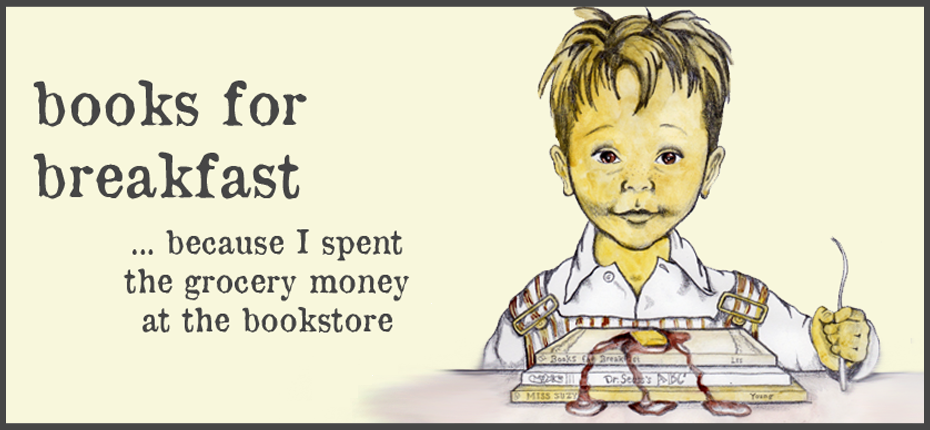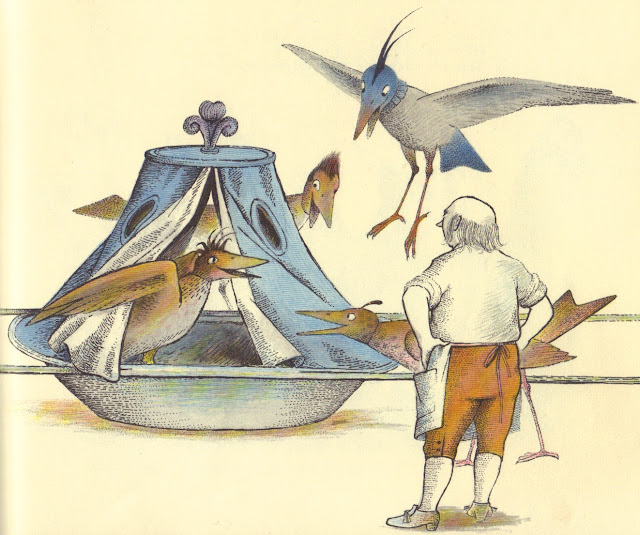Black or Red is a book of essays on books, book collectors, literary hoaxes, now forgotten classics, and one lone, strange chapter about a parrot. I read the bird essay to the end, looking for the books to make an appearance (after all, this is a book about books - says so in the title), but to no avail. But other than the bird chapter, Black or Red is one of the most delightful books of the genre I have read to date.
There are two chapters devoted to the literary hoax. The literary hoax can be an elaborate practical joke of sorts, intended to make the book collector seem a fool, or the literary hoax can be a forgery, where ill gotten money, not mockery, is the intended result. One such forgery which Pearson describes is the curious case of the "eminent French mathematician, M. Michel Chasles, who between 1861 and 1870 bought more than twenty-seven thousand forgeries, and paid out 150,000 francs for them."
Pearson says of the forger:
A man with a meager education, colossal assurance, and a strong right arm concocted these forgeries, and he must have worked at an average rate of about eight a day over a long period of years. His name was Vrain-Denis Lucas. The documents and letters included letters from Pascal (by the hundred), from Shakespeare (twenty-seven of them), hundreds from Rabelias, and others from Newton, from Louis XIV, from the Cid, from Galileo. But these were only the less remarkable items of the collection; the gems included letters from Sappho, Virgil, Julius Caesar, St. Luke, Plato, Pliny, Alexander the Great, and Pompey! There was a letter from Cleopatra to Caesar, discussing their son Cesarion; a note from Lazarus to St. Peter; and a chatty little epistle from Mary Magdalene to the King of the Burgundians. Why did he neglect to include the first A.L.S. recorded in history - the letter from David to Joab, which he sent by the hand of Uriah? Consider that these were all written on the same kind of paper, not on parchment, and that all of them, even those from Biblical personages, were written in French.Perhaps the greatest literary hoax of all time was perpetrated not for monetary gain, but for mere amusement. In 1840, eminent book collectors of the day received in the mail a sixteen page catalogue of books collected by the now deceased "Jean Nepomucene-Auguste Pichauld, comte de Fortsas," of Belgium. What made his collection remarkable, irresistible actually was the fact that,
He would own no book of which any other copy existed. No matter what price he had paid, let him find one of his books mentioned by a bibliographer, and he would sell, give away, or . . . destroy it! As a result, this collection, 'very rich but few in number,' represented a mere fragment of the Count's former library. The numbers in the catalogue ran up to 222, but there were many gaps, and only about fifty-two items actually appeared."Of the items appearing in the catalogue, one was an infamous autobiography of an eminent prince, purported to contain a history of his exploits and conquests, a book for which a living royal relative was willing to pay dearly in order to avoid familial scandal.
In the days leading up to the bidding, collectors descended on the small Belgium town, frightening the bewildered citizens who had never heard of this "Jean Nepomucene-Auguste Pichauld" nor his famous book collection. This being a time of unrest in Europe, the residents began to suspect these odd-looking men - waving around pamphlets and speaking of foreign princes and green bindings - to be dangerous characters, maybe even spies.
I happen to think this particular, little story would make a great movie. The movie opens with each collector sitting down in his (they were all men) respective library, filled to the rafters with sumptuous bindings and rare folios, opening the days mail, happening upon the unassuming catalogue, then packing a steamer trunk, booking passage on the S.S. Somethingorother, bound for Belgium. Next scene, Binche, Belgium, a small town in the shadow of ancient castles and brooding mountains, foreigners swelling the inns, baffling the locals. And just like the collectors themselves, the viewing audience wouldn't know until the last scene that the whole thing was just an elaborate hoax. It would be beautiful.
Besides the chapters on Literary Hoaxes, my favorite essay is entitled "The Lost First Folio," an essay almost entirely composed of a series of letters between a Mr. Agamemnon Jackson and his elderly Aunt Martha, who lives in Raspberry, Maine. Aunt Martha has taken in a friend for the winter, Mrs. Fessenden, who very much likes preserved damsons, whatever those are. Aunt Martha blathers on and on about tea, and popovers, and whether or not to sell stock, and how her nerves forbid her to read the newspaper. After she relates how old Deacon Bradley dyed his beard to look young and it turned bright green, she appends a postscript in which she writes:
There are a lot of old books in that box of your uncle's in the garret. Do you want them? I will send them to you if you do, for what with papers and the magazines, I don't want any more books than those we have in the bookcase in the parlor now. You remember what a great reader your uncle was. And he was executor of Dr. Perley's estate - and part of the books came to him by the will. You wouldn't recall old Dr. Perley - his wife was a perfect martyr, I always said, and kept everything going while he was gallivanting about Europe buying more books than he ever could read. Besides, Mrs. Fessenden's niece who is a teacher in the High School, brings home books all the time from the library. So you can have them if you want them. I'll get old Dave Lunt to pack them up.After reading a few of Aunt Martha's letters, I'm reminded of the old lady from Arsenic and Old Lace, the short, plump happy aunt to poor Mortimor. Always prattling on and on about everything and nothing, but failing to mention the dead bodies buried in the basement. Books aren't exactly dead bodies, but Aunt Martha fails to understand that Agamemnon is a heel and cares only about the books, one book in particular, number 8 in a list of fifteen up in Aunt Martha's garret. Number 8 is listed as Shakespeare's Comedies, &c.
After many letters pass between Aunt Martha and Agamemnon, it becomes obvious that number 8 is indeed a very rare Shakespeare, and dear Agie is desperate to acquire it, a fact to which Auntie is oblivious. She spills much ink on Mrs. Buntin's great-grandson, you remember him, don't you? who smokes cigarettes, and Mrs. Fessenden who uses Agamemnon's letters as curling papers, yet she always forgets to answer his questions about the Shakespeare.
Agie's desperation is palpable in his thought scrawled across the bottom of Martha's letter about Mrs. Buntin's smoking grandson (Suffering Cats! was there ever such a woman!) and his terse reply.
Dear Aunt Martha - Will you please answer the questions about the Shakespeare I asked in my letter?
In haste,
A. Jackson
To find out what comes of the folio and Agamemnon, you must get your hands on the book. And that must be all for now. Cruel, maybe, but if I told all, your enjoyment in reading would be less. And as I'm writing the final paragraph of this post, I'm reminded of The Carey Girls, another chapter in Black or Red that deserves mentioning, but in the hopes of saving at least one jewel for you to discover, I'll only quote a small portion without elaborating or explaining.
In Miss Cary's library you stood and wondered what was behind those paper covers. What strange voyage or extraordinary chapters of wonder might be disclosed if you took one of those volumes home? There had been some great moments. A tale of a suicide club, and the story of a rajah's diamond had been found in one called "The New Arabian Nights," by a Scotchman whose life was then drawing to a close in the South Sea Islands. There were some crisp and tingling little stories about India by a newspaper man from Lahore, who had just offended America by his flippant account of his visit to this country. My brother had recently come home with two poems which filled me with delight. They were also by this newspaper man from India, and they were called "Gunga Din" and "Mandalay." And for the next ten years I never hesitated to horrify my elders by saying that Kipling and Stevenson were far better than Sir Walter Scott. Now it is my turn to be horrified and disgusted when I hear that boys in school and college think that only old fogies read Kipling and Stevenson.
Lovely, isn't it?































